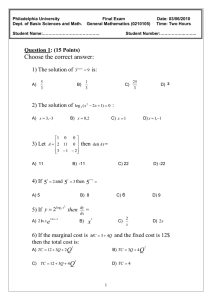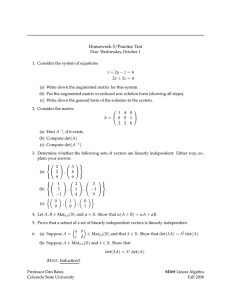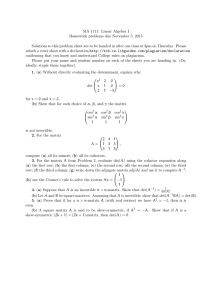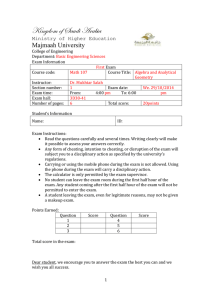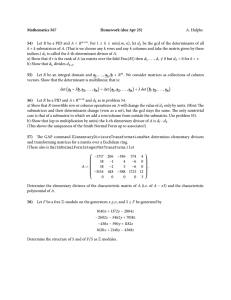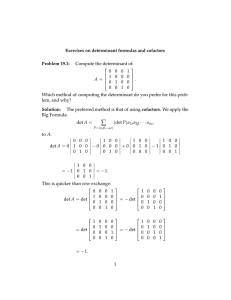First and last name:
advertisement
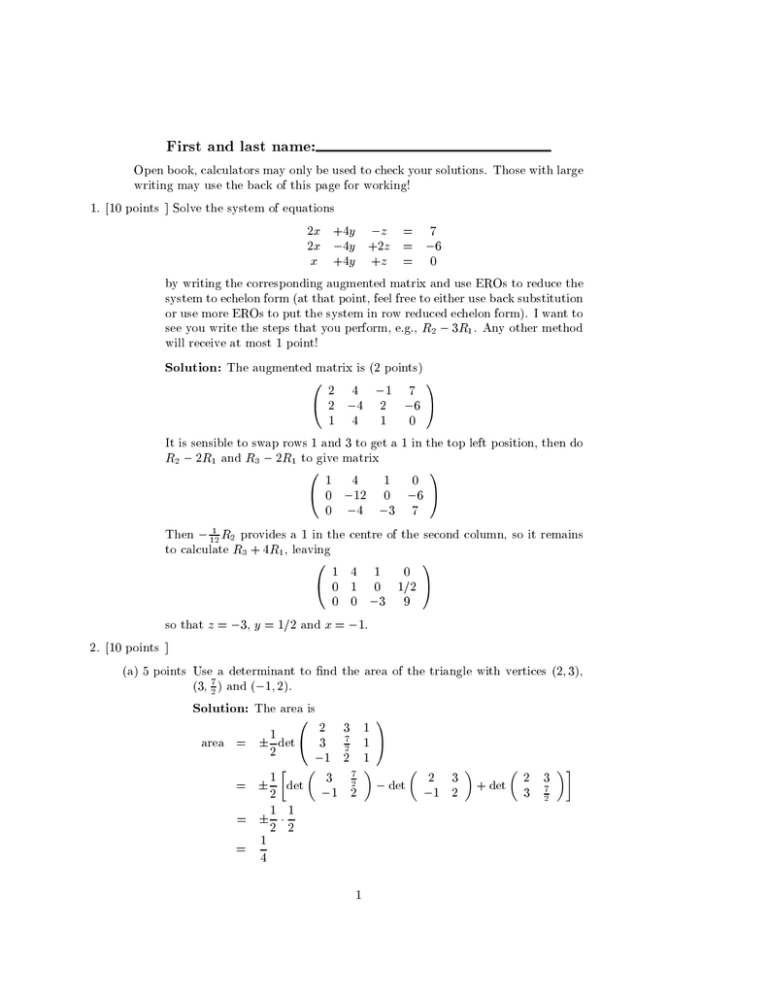
First and last name: Open book, calculators may only be used to check your solutions. Those with large writing may use the back of this page for working! 1. [10 points ] Solve the system of equations 2 +4 , = 7 2 ,4 +2 = ,6 +4 + = 0 by writing the corresponding augmented matrix and use EROs to reduce the system to echelon form (at that point, feel free to either use back substitution or use more EROs to put the system in row reduced echelon form). I want to see you write the steps that you perform, e.g., 2 , 3 1 . Any other method will receive at most 1 point! Solution: The augmented matrix is (2 points) 0 2 4 ,1 7 1 @ 2 ,4 2 ,6 A 1 4 1 0 It is sensible to swap rows 1 and 3 to get a 1 in the top left position, then do 2 , 2 1 and 3 , 2 1 to give matrix 01 4 1 0 1 @ 0 ,12 0 ,6 A 0 ,4 ,3 7 Then , 121 2 provides a 1 in the centre of the second column, so it remains to calculate 3 + 4 1 , leaving 01 4 1 0 1 @0 1 0 12A 0 0 ,3 9 so that = ,3, = 1 2 and = ,1. 2. [10 points ] (a) 5 points Use a determinant to nd the area of the triangle with vertices (2 3), (3 72 ) and (,1 2). Solution: The area is 0 2 3 11 area = 12 det @ 3 27 1 A ,1 2 1 2 3 2 3 7 1 3 2 = 2 det ,1 2 , det ,1 2 + det 3 7 2 1 1 = 2 2 = 14 x y x y x z z y z R R R R R R R R R = z y = x ; ; ; 1 (b) 4 points Check your answer to part (a) by calculating the determinant again, but this time expand using a dierent row or column to the one you used in part (a). [I'm trying to get you in to the habit of always checking your answer!] 0 area = = = = 2 12 det @ 3 ,1 7 12 2det 22 12 21 1 4 1 3 1 72 1A 2 1 1 , 3det 3 1 1 ,1 1 = + det 3 27 ,1 2 (c) 1 point Are the points (2 3), (3 72 ) and (,1 2) collinear? A yes or no answer will do here!! ; Solution: ; ; No, because the triangle has nonzero area. 2
